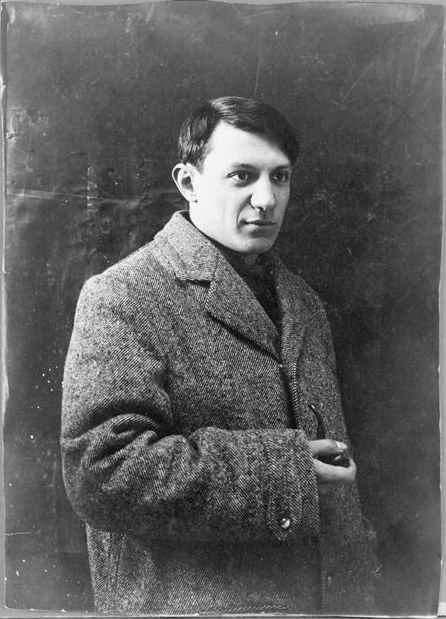How the contributions of Pablo Picasso continue to shape the world today.
Pablo Picasso (1881-1973) was a Spanish painter, sculptor, and printmaker who spent much of his life in France. He is considered one of the most influential artists of the 20th century, best known for co-founding Cubism and for his diverse artistic styles. Picasso also invented constructed sculpture and co-invented collage. His iconic works include the proto-Cubist painting *Les Demoiselles d'Avignon* and *Guernica*, a powerful anti-war depiction of the bombing of Guernica during the Spanish Civil War. Picasso's impact on modern art remains significant.
1923: Picasso's Statement on Artistic Style
In an interview published in 1923, Picasso stated that the different manners he used in his art were not an evolution but rather a reflection of the subjects he wanted to express, adopting different ways of expression as needed.
1939: Retrospective at the Museum of Modern Art
In 1939, on the occasion of Picasso's retrospective at New York's Museum of Modern Art, Life magazine acknowledged his dominance in modern European art, with opinions divided on whether he was a corrupting influence or the greatest artist alive.
1940: Mixed Critical Reception of Retrospective
In 1940, following the major retrospective of his work, Picasso faced a surprisingly ambivalent critical reception, with journalists expressing disturbance over his "multiplicity of styles" and describing him as "wayward and even malicious."
1967: Unveiling of the Chicago Picasso
In 1967, the Chicago Picasso, a large public sculpture, was unveiled in downtown Chicago. Picasso designed the ambiguous and somewhat controversial sculpture and donated it to the city, refusing payment.
1968: Torrent of Paintings and Etchings
From 1968 to 1971, Picasso produced a large volume of paintings and copperplate etchings, with his works becoming more daring, colourful, and expressive. These works were later seen as prefiguring Neo-Expressionism.
1971: Torrent of Paintings and Etchings
From 1968 to 1971, Picasso produced a large volume of paintings and copperplate etchings, with his works becoming more daring, colourful, and expressive. These works were later seen as prefiguring Neo-Expressionism.
April 1973: Picasso's Death
Pablo Picasso, a highly influential Spanish artist, died in April 1973. He was known for co-founding Cubism and his diverse artistic styles.
December 1976: Settlement on Picasso's Estate
In December 1976, Picasso's heirs, including his widow Jacqueline, grandchildren, and children, reached a settlement on how to divide his $240 million estate.
1981: Return of Guernica to Spain
In 1981, Guernica was returned to Spain and exhibited at the Casón del Buen Retiro of the Museo del Prado.
1981: Guernica sent to Spain
In 1981, after the establishment of liberty and democracy, the painting "Guernica" was returned to Spain.
1985: Establishment of Museum Picasso Eugenio Arias' Collection
In 1985, the Museum Picasso Eugenio Arias' Collection was established in Buitrago del Lozoya by Picasso's friend, Eugenio Arias Herranz. This museum houses a collection related to Picasso's life and work.
1989: Claude served as legal administrator of the estate
From 1989, Claude served as legal administrator of the estate until 2023, when his sister Paloma took over.
1992: Display of Guernica in the Reina Sofía Museum
In 1992, the painting Guernica was put on display in the Reina Sofía Museum when it opened.
1993: Picasso at the Lapin Agile Play
In 1993, Picasso is featured as a character in Steve Martin's play, 'Picasso at the Lapin Agile'.
1993: Dissolution of Authentication Committee
In 1993, the committee formed by Picasso's heirs to authenticate his works dissolved due to disagreements regarding the legitimacy of a series of drawings. This led to the emergence of dual and competing authentication methods.
1996: Surviving Picasso Film Release
In 1996, the movie 'Surviving Picasso', where Pablo Picasso is portrayed by Anthony Hopkins, was released.
1998: Hughes's Assessment of Picasso's Influence
In 1998, Robert Hughes stated that Pablo Picasso dominated Western art in the 20th century, achieving a level of fame unmatched by any painter or sculptor, including Michelangelo, during his lifetime.
2003: Inauguration of Museo Picasso Málaga
In 2003, relatives of Picasso inaugurated the Museo Picasso Málaga in his birthplace, Málaga, Spain. The museum is dedicated to showcasing Picasso's works.
2003: Revelation of Citizenship Refusal
In 2003, the reason for Picasso's 1940 rejection for French citizenship was revealed, citing his "extremist ideas evolving towards communism".
2011: Picasso Appears in Midnight in Paris
In the 2011 film 'Midnight in Paris', directed by Woody Allen, Picasso (portrayed by Marcial Di Fonzo Bo) appears as a member of the 1920s Parisian art circles.
2012: Most Stolen Artist
In 2012, Picasso had 1,147 works listed as stolen in the Art Loss Register, making him the artist with the most stolen paintings.
2012: Analysis of The Red Armchair
In 2012, a nanoprobe analysis of Picasso's The Red Armchair (1931) by physicists at Argonne National Laboratory confirmed that Picasso used common house paint in many of his paintings.
2012: Establishment of the Picasso Administration
In 2012, four of Picasso's five surviving heirs established the Picasso Administration to authenticate works by the artist. Claude was designated as the recipient of all authentication requests.
2015: Top-Ranked Artist by Sales
As of 2015, Picasso remained the top-ranked artist based on sales of his works at auctions according to the Art Market Trends report.
June 2016: Femme Assise Sells for Record Price
In June 2016, Pablo Picasso's painting 'Femme Assise (1909)' was sold for £43.2 million ($63.4 million) at Sotheby's London. The sale exceeded the estimate by nearly $20 million and set a world record for the highest price ever paid at auction for a Cubist work.
May 2017: Sale of "Femme assise, robe bleu"
In May 2017, 'The Jerusalem Post' reported the sale of Picasso's 1939 portrait 'Femme assise, robe bleu' for $45 million at Christie's in New York City. The painting had been misappropriated during WWII and changed hands several times since its recovery.
March 2018: Femme au Béret et à la Robe Quadrillée Sold at Auction
In March 2018, Picasso's 'Femme au Béret et à la Robe Quadrillée (1937)', a portrait of Marie-Thérèse Walter, was sold for £49.8m at Sotheby's in London.
2018: Antonio Banderas Portrays Picasso in Genius
In the 2018 season of 'Genius', Antonio Banderas portrays Pablo Picasso, focusing on his life and art.
September 2020: Project for new Picasso Museum scrapped
On 22 September 2020, it was announced that the project for a new Picasso Museum, due to open in Aix-en-Provence in 2021, had been scrapped because Catherine Hutin-Blay and the City Council failed to reach an agreement.
2021: Canceled opening of Picasso museum in Aix-en-Provence
In 2021, the planned opening of a new Picasso Museum in Aix-en-Provence was canceled because Catherine Hutin-Blay, Jacqueline Picasso's daughter, and the City Council failed to reach an agreement in September 2020.
2023: Paloma takes over as legal administrator of the estate
In 2023, Paloma Picasso took over from her brother Claude as the legal administrator of the Picasso estate.
Mentioned in this timeline

Antonio Banderas born Jos Antonio Dom nguez Bandera is a...
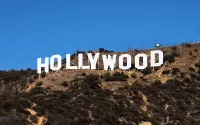
Los Angeles is the most populous city in California and...

World War I a global conflict between the Allies and...
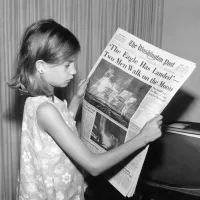
News encompasses information about current events disseminated through various media...

Seattle is the most populous city in Washington state and...
France officially the French Republic is a country primarily in...
Trending
40 minutes ago Microsoft Expands Data Centers, Investors See Buying Opportunity Despite Pullback

40 minutes ago Jay Kelly film starring George Clooney and Adam Sandler: Reviews and streaming details.
40 minutes ago Multiple Texas ISDs Earn CTE District of Distinction Awards for Excellence in Education
2 hours ago Australia Rejects Turkey's Climate Summit Co-Hosting Offer: Standoff Intensifies, Albanese Declares 'Not an Option'
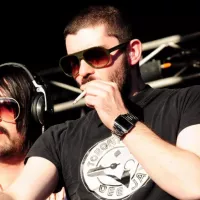
2 hours ago MicroStrategy purchased 8,178 Bitcoins amid price dip, Michael Saylor remains bullish.

2 hours ago George Strait Announces Lubbock Concerts: Tickets on Sale November 21st!
Popular
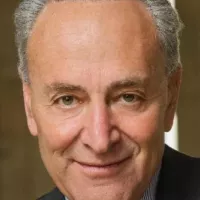
Chuck Schumer is the senior United States Senator from New...

XXXTentacion born Jahseh Dwayne Ricardo Onfroy was a controversial yet...

Bernie Sanders is a prominent American politician currently serving as...

Candace Owens is an American political commentator and author known...

Cristiano Ronaldo often nicknamed CR is a Portuguese professional footballer...

Vivienne Westwood was a highly influential English fashion designer and...
